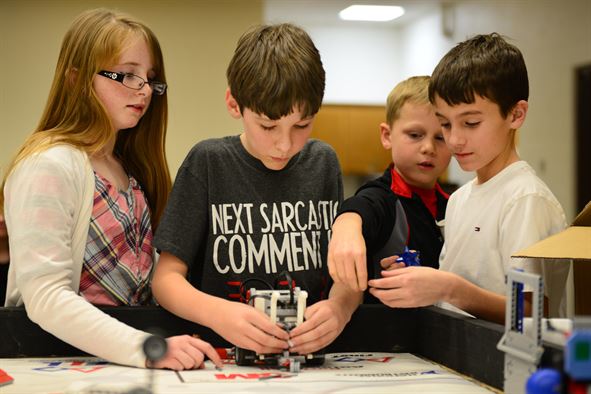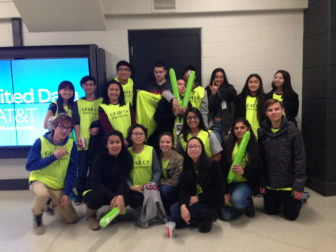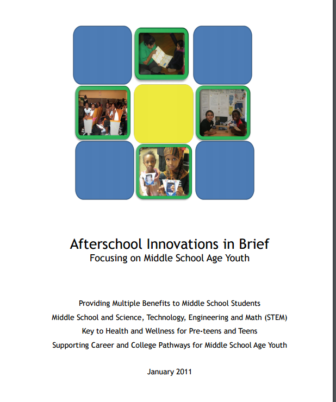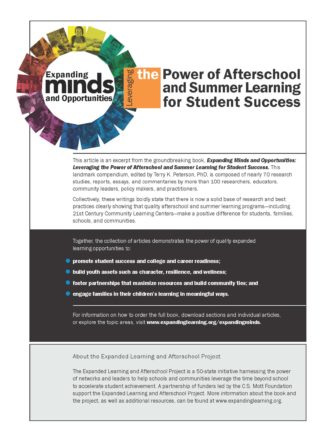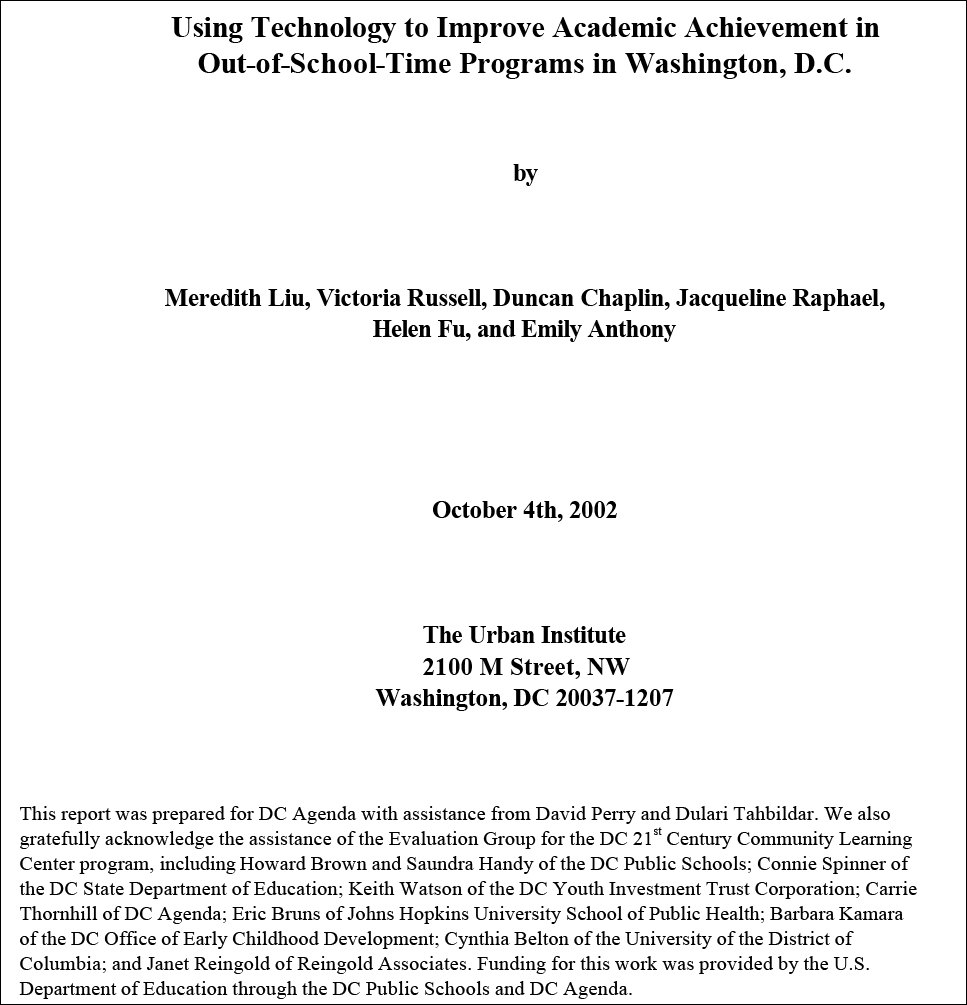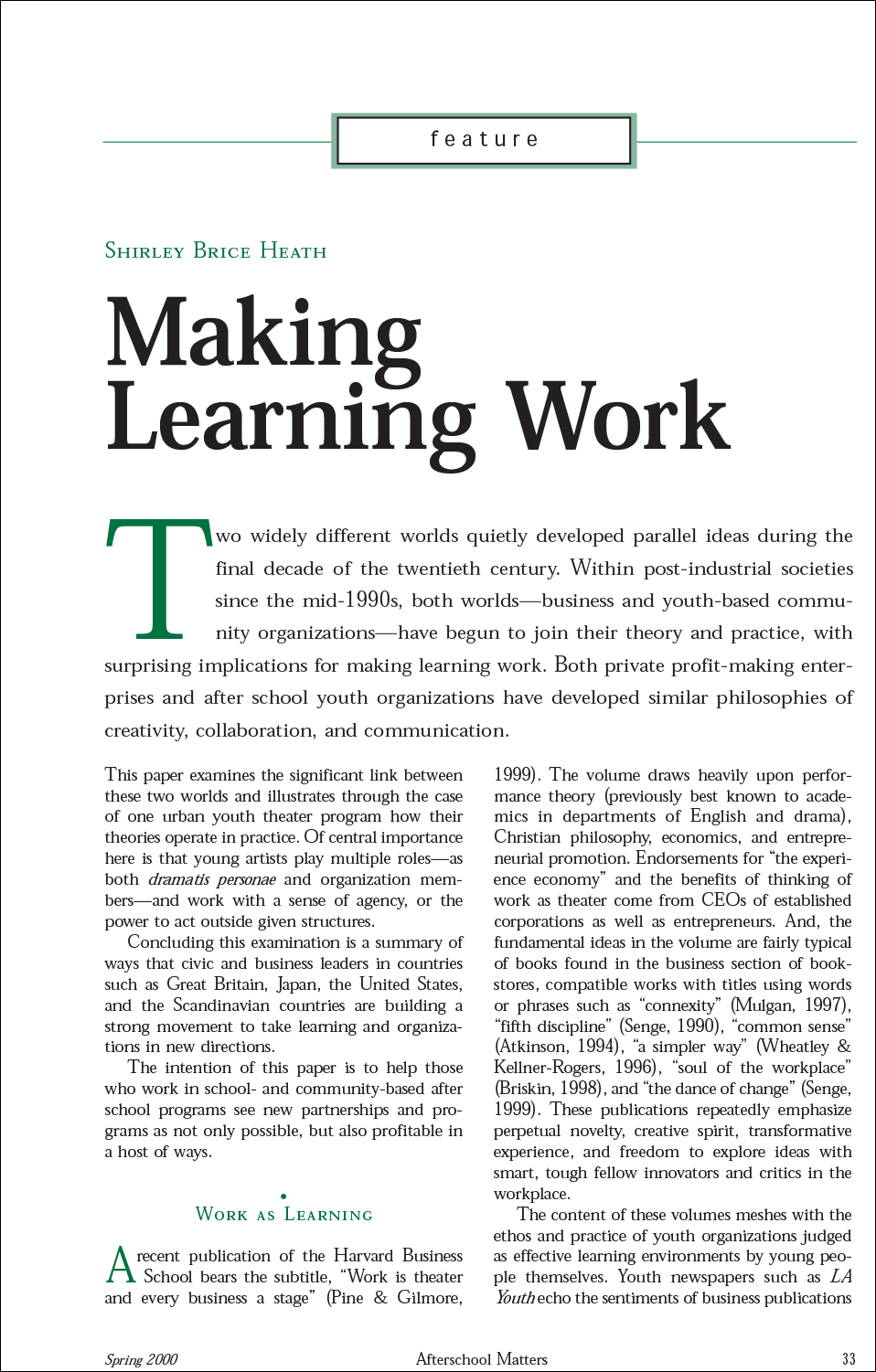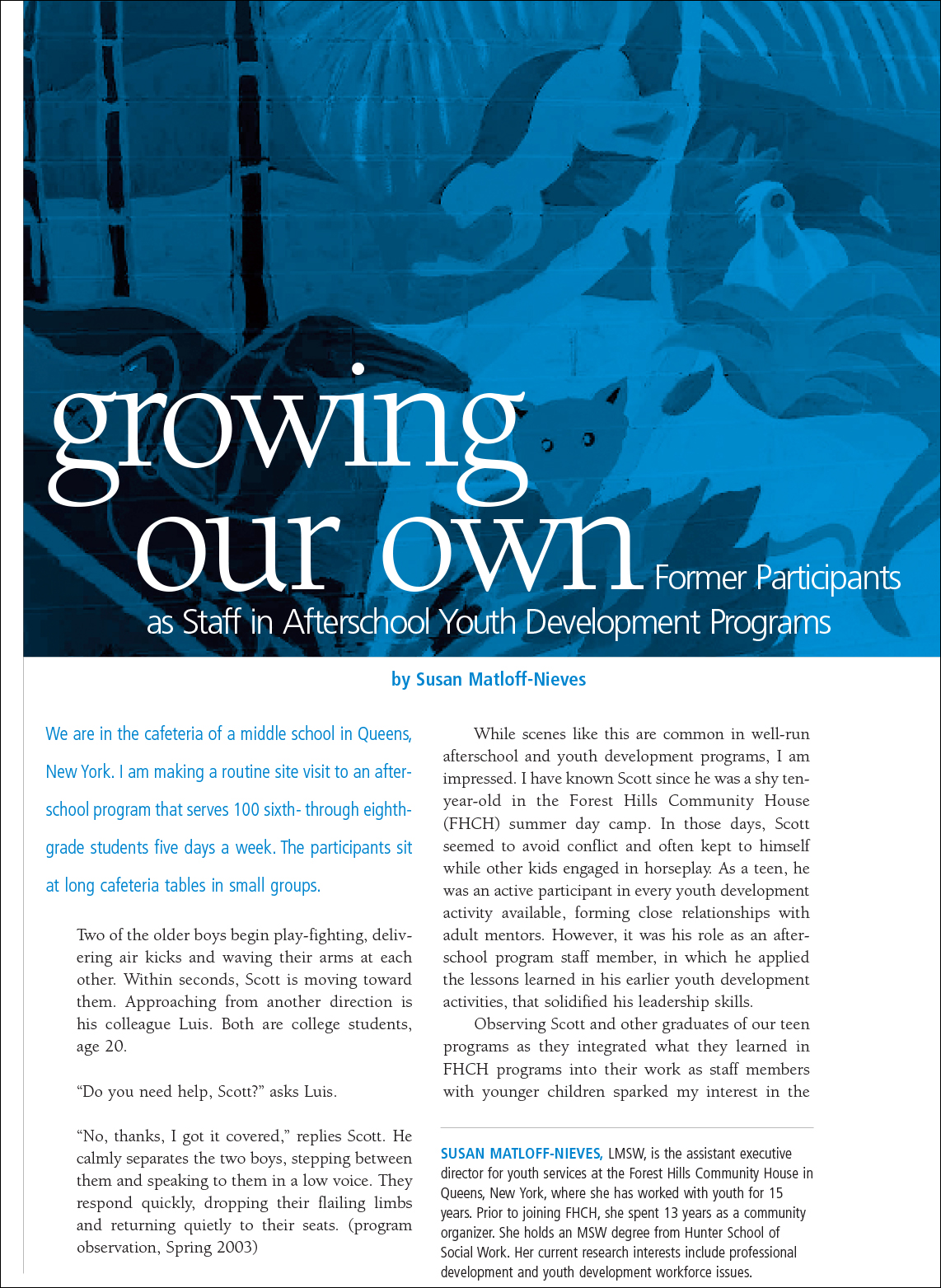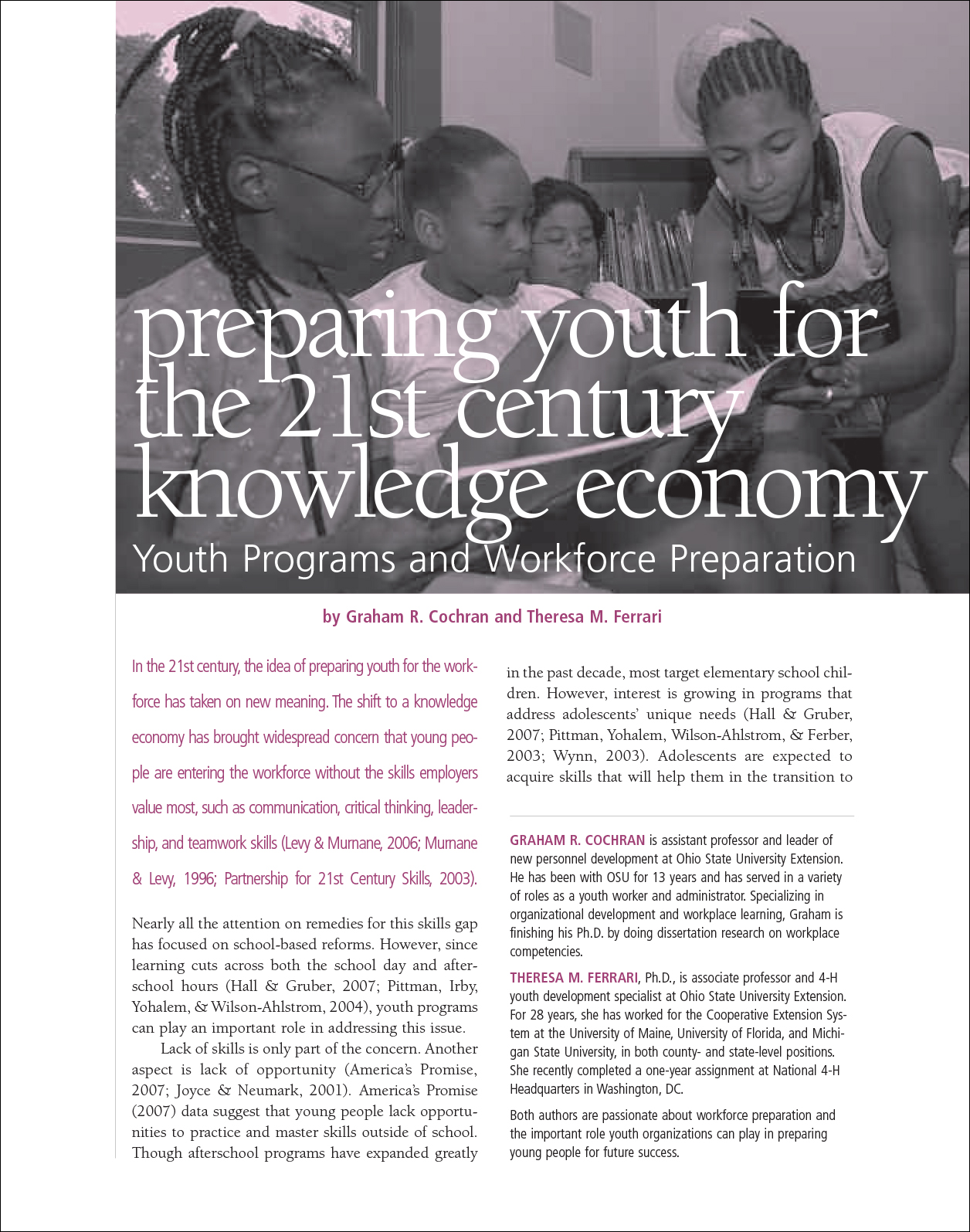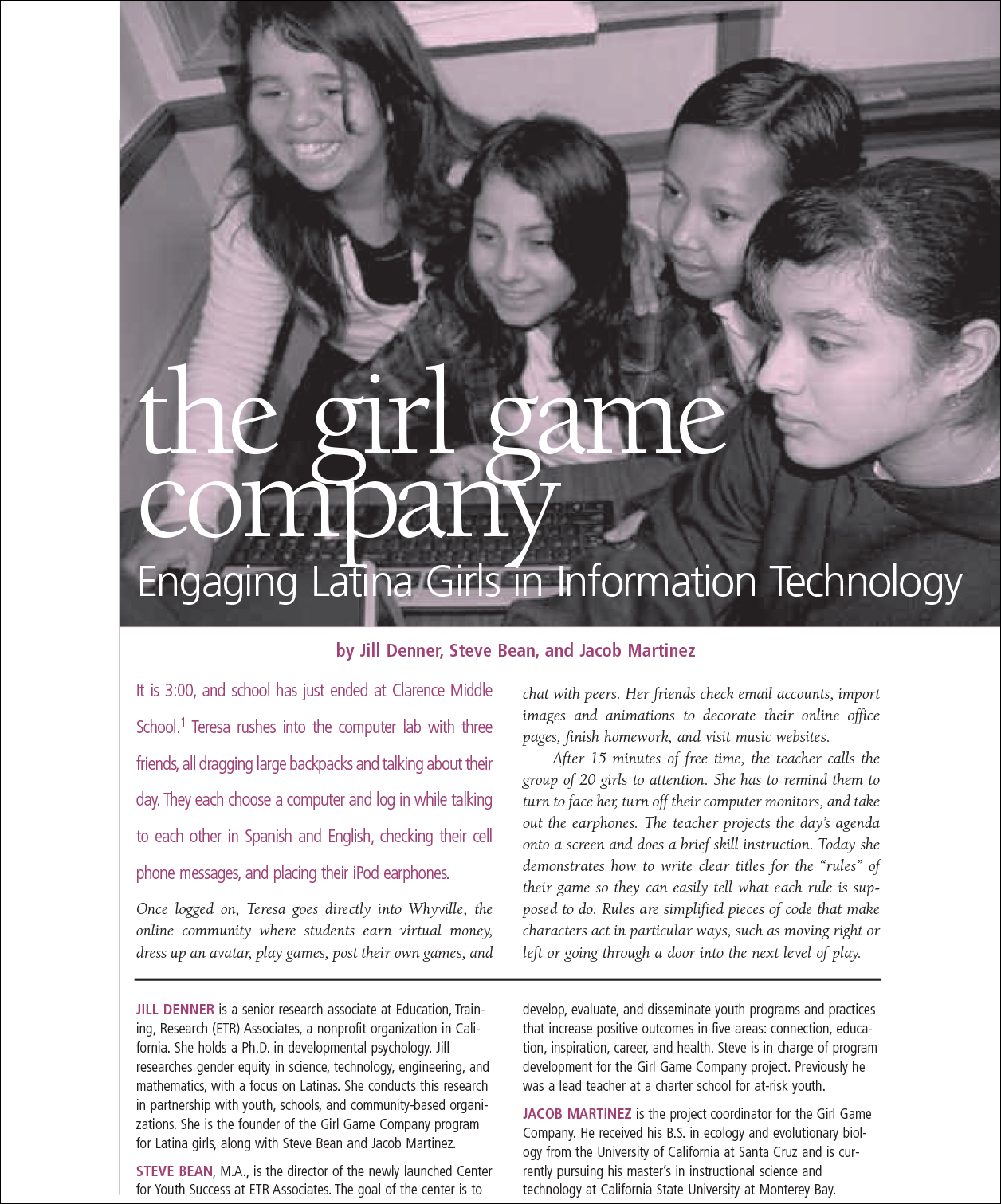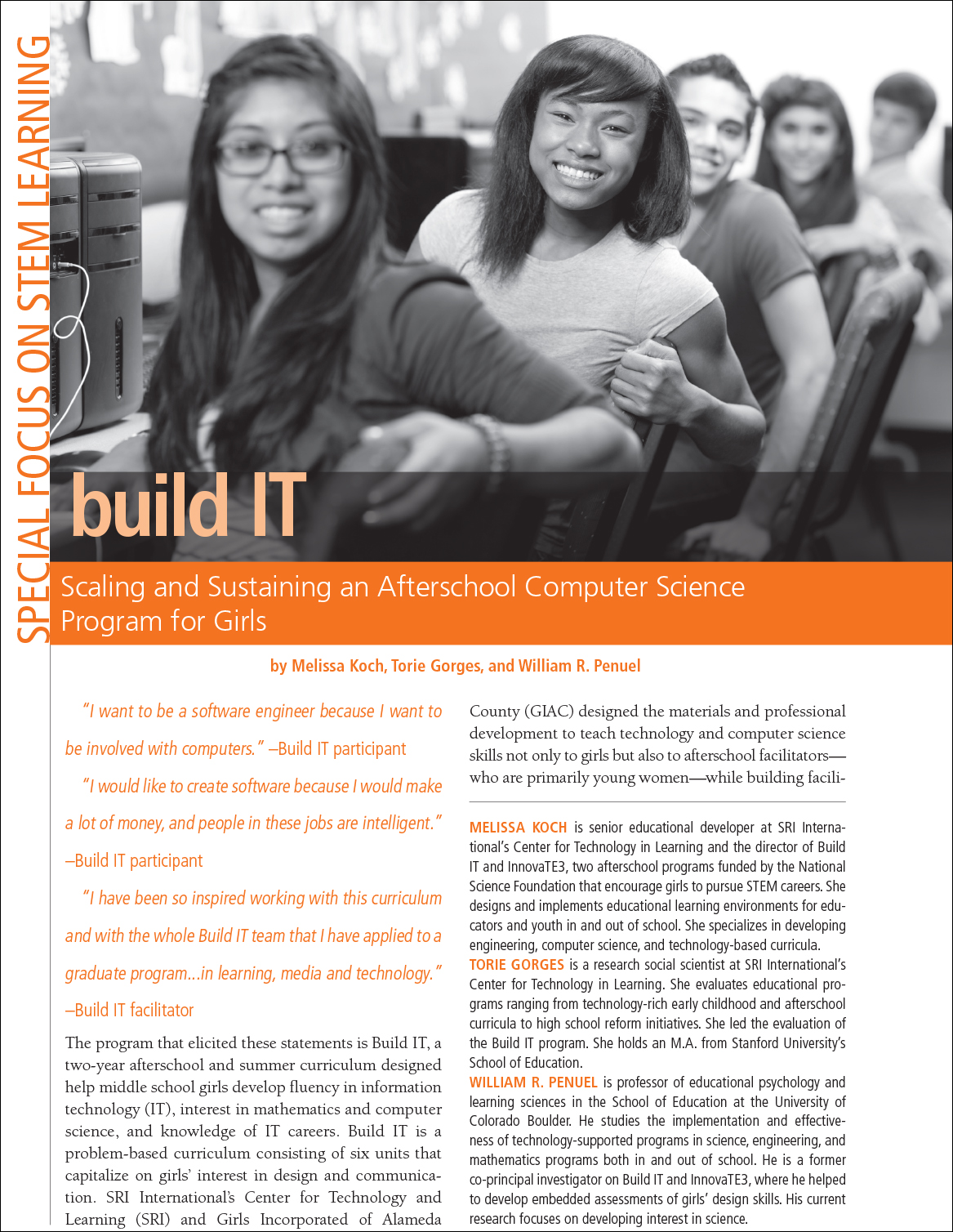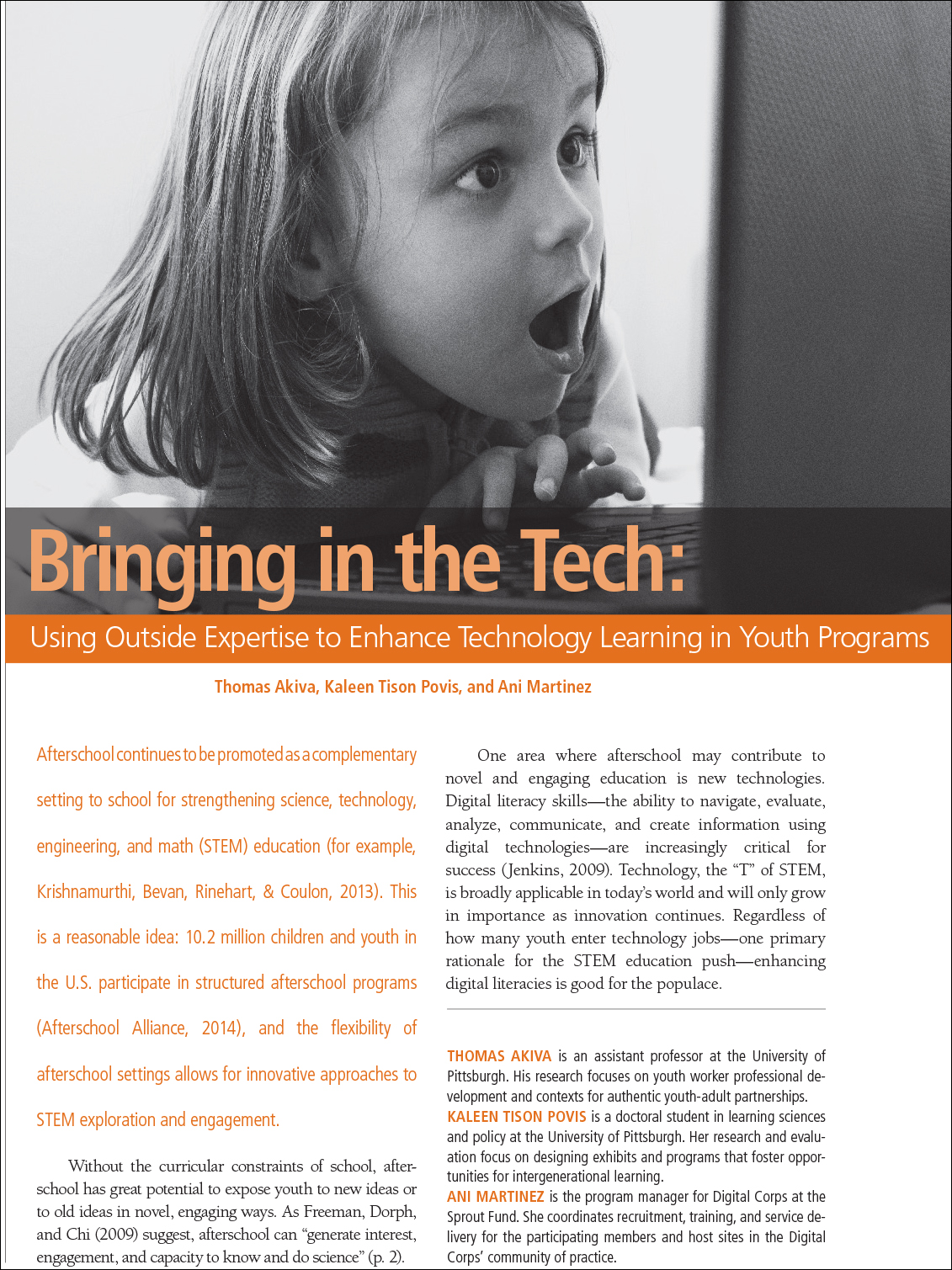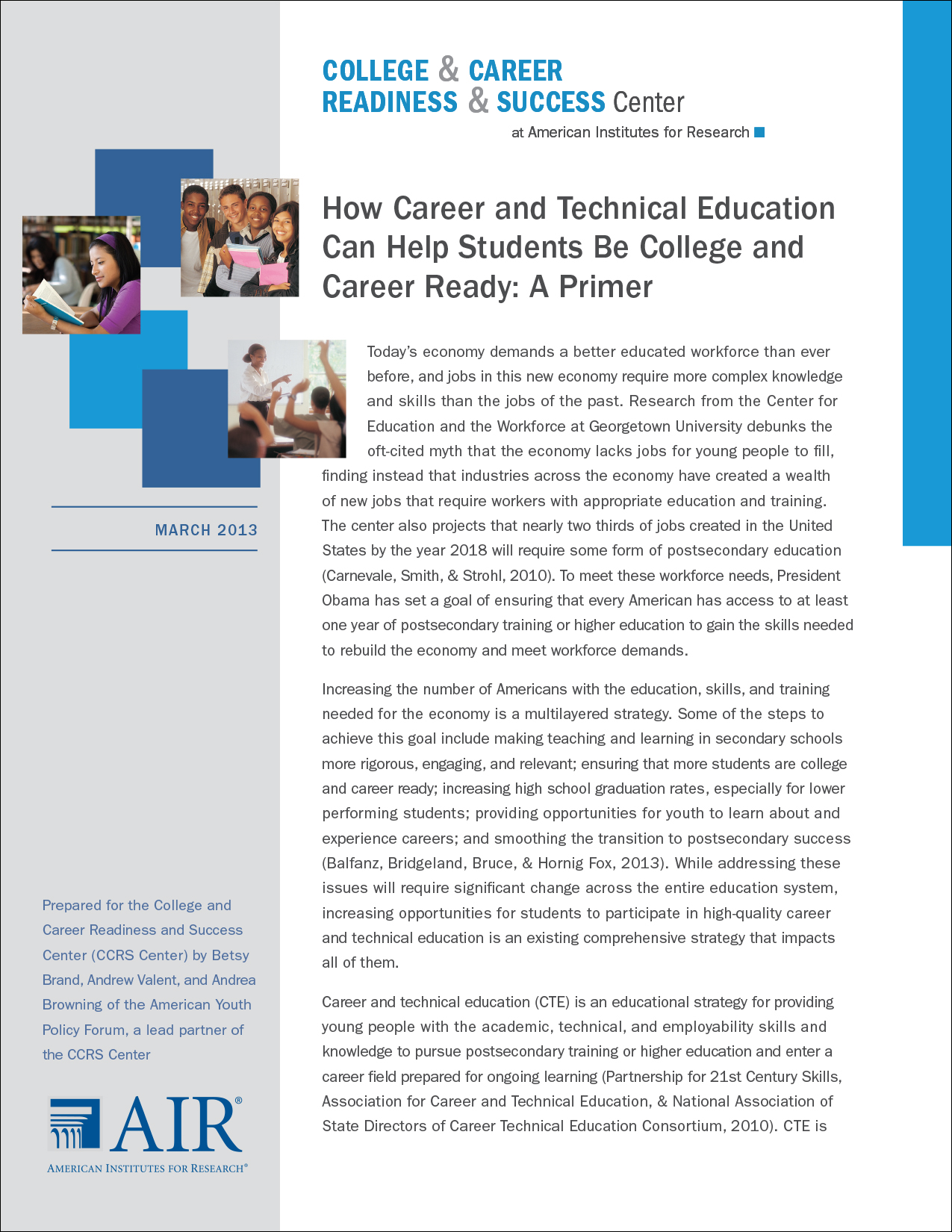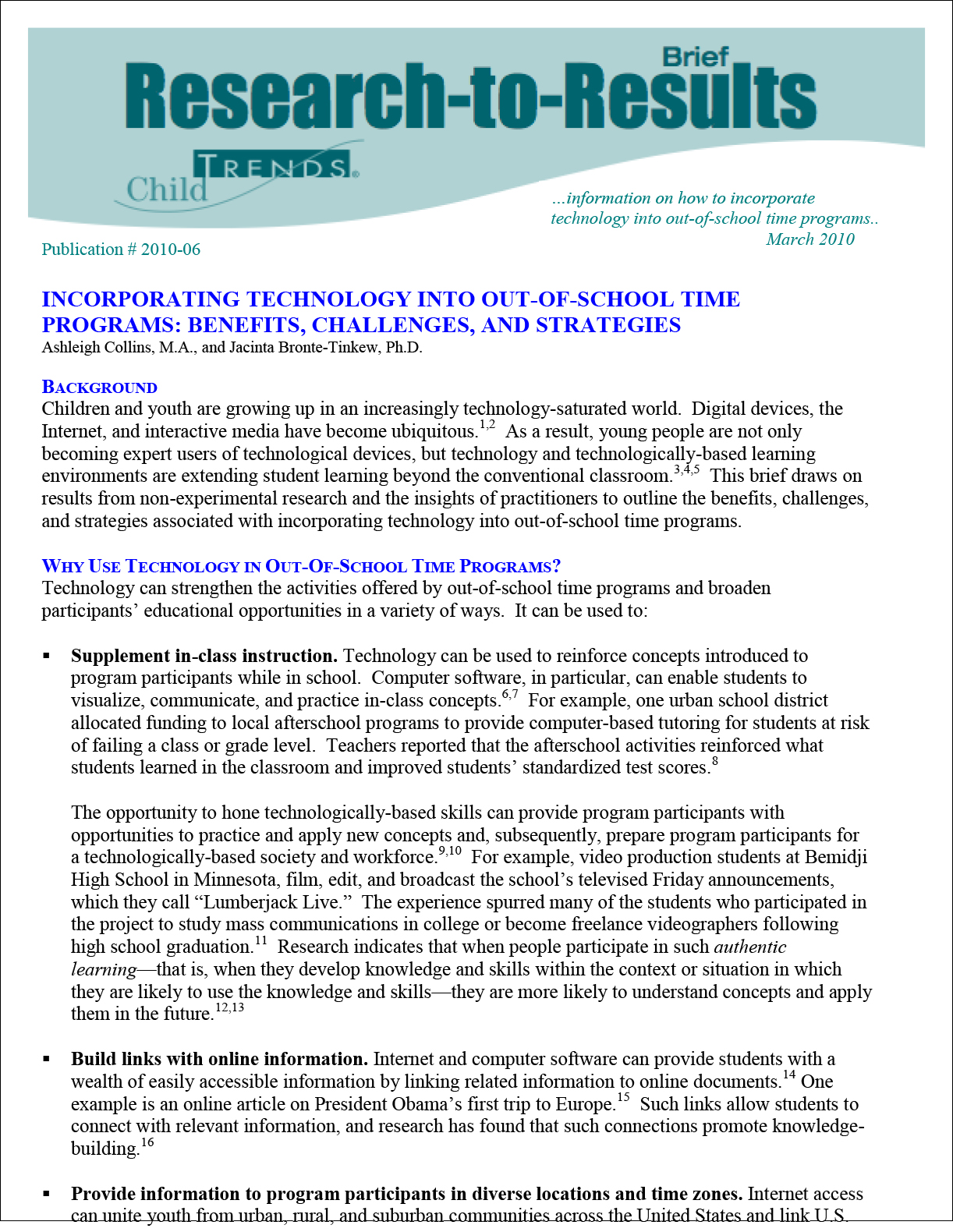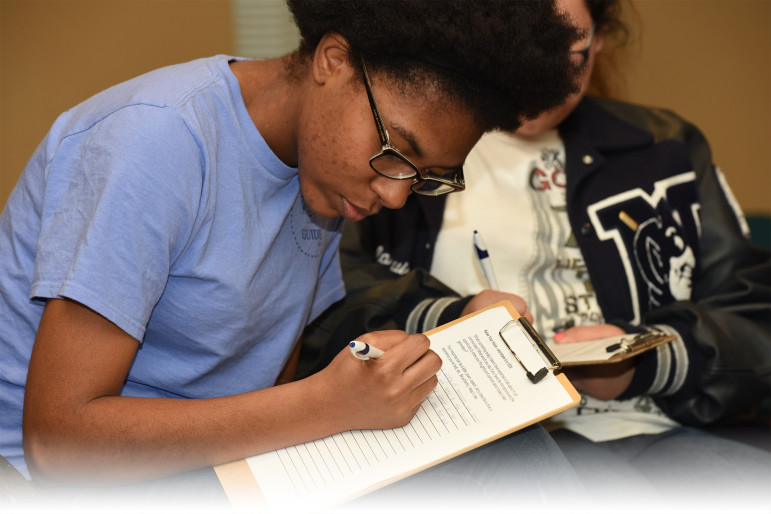
Explore & Download These Resources
Mapping Opportunity Youth Needs in the U.S.
The International Youth Foundation, through the (Re)Connecting youth project, is focusing its efforts on “opportunity youth” in the U.S. — those youth who are not in school or working. Presented here is a summary of a scan of priority needs which builds on available data and analysis from U.S. organizations and initiatives that have closely examined the needs of this population.
Workforce Readiness & Afterschool
This Powerpoint provides the findings of a 2016 study by Riley Institute at Furman University. The study surveyed afterschool state network leads using a comprehensive skills list from the National Network of Business and Industry Associations and additional skills from other nationally-regarded organizations. Survey responses illustrate the extent to which workforce readiness skills are developed in afterschool programming and the strategies programs use to grow those skills.
Considerations for Collaborations to Support College and Career Readiness
This guide provides questions designed to help states explore the complex challenges inherent in facilitating cross-systems alignment through ongoing collaboration. Each question borrows from the systems research base derived from within and outside the field of education.
Afterschool Innovations in Brief.
This compendium pulls together both research and promising programs that illustrates how afterschool programs help middle school youth, families and communities. There is a section that focuses specifically on college and career pathways.
Leveraging the Power of Afterschool and Summer Programs for Student Success.
This chapter from a longer book provides descriptions of several exemplary afterschool and summer learning programs that provide youth with opportunities to learn about postsecondary education and careers and develop employability skills.
Using Technology to Improve Academic Achievement in Out-of-School Time Programs in Washington, DC
This report was a study of how technology was used to improve academic achievement in the DC 21st CCLC program.
Making Learning Work
Youth programs and business are often seen as different worlds. This paper, by the researcher Shirley Brice Heath, examines the link between the two worlds and illustrates through the case of one urban youth theater program how young artists play multiple roles—and work with a sense of agency, or the power to act outside given structures.
Growing Our Own: Former Participants as Staff in Afterschool Youth Development Programs
This article, written by a seasoned administrator of a youth organization, articulates the particular benefits and challenges of hiring former participants as staff: The program gets a worker who is already well oriented to the program’s and agency’s mission, policies and procedures, and philosophy of youth development. However, as young people, they also need support and ongoing youth development themselves. This article provides some strategies and suggestions for how to support these staff.
Preparing Youth for the 21st century Knowledge Economy. Youth Programs and Workforce Preparation
The shift to a knowledge economy in the 21st century has brought widespread concern that young people are entering the workforce without the skills employers value most, such as communication, critical thinking, leadership, and teamwork skills. This article demonstrates how youth programs can play an important role in addressing this issue.
The Girl Game Company. Engaging Latina Girls in Information Technology
In the last five years, people have increasingly moved from simply being users of Informational Technology (IT) to adapting the content and functions of technology, often in the context of interactive, virtual worlds and game-like environments. Despite the infusion of technology, females are still not full participants in the careers that are shaping the future of IT. This article describes a program that engages Latina girls in designing and programming computer games and builds a network of support to help them pursue IT courses and careers.
Build IT. Scaling and Sustaining an Afterschool Computer Science Program for Girls
This article describes the need to create sustainable, scalable afterschool computer science programs targeting girls. It describes the development of one such curriculum, Build IT, a two-year afterschool and summer curriculum designed help middle school girls develop fluency in information technology (IT), interest in mathematics and computer science, and knowledge of IT careers.
Bringing in the Tech: Using Outside Expertise to Enhance Technology Learning in Youth Programs
The “T” in STEM, technology is less commonly seen in afterschool than science or math. One reason for this may be that youth workers often do not have the technology expertise required to produce high-quality learning in digital literacy. Complementary services may be a viable way to provide that expertise. This article explores “insert programs”: the increasingly common practice in which an outside provider brings facilitators, content, and (usually) curriculum into an existing afterschool program.
How Career and Technical Education Can Help Students Be College and Career Ready: A Primer
This “primer” by the American Institutes for Research provides a comprehensive description of Career and Technical Education (CTE), provides an overview of the Perkin Act, and describes a variety of ways that CTE can be implemented.
Incorporating Technology into Out-of-School Time Programs: Benefits, Challenges and Strategies
This Research-to-Results Brief by Child Trends articulates both the challenges and benefits to incorporating technology into OST programs.





